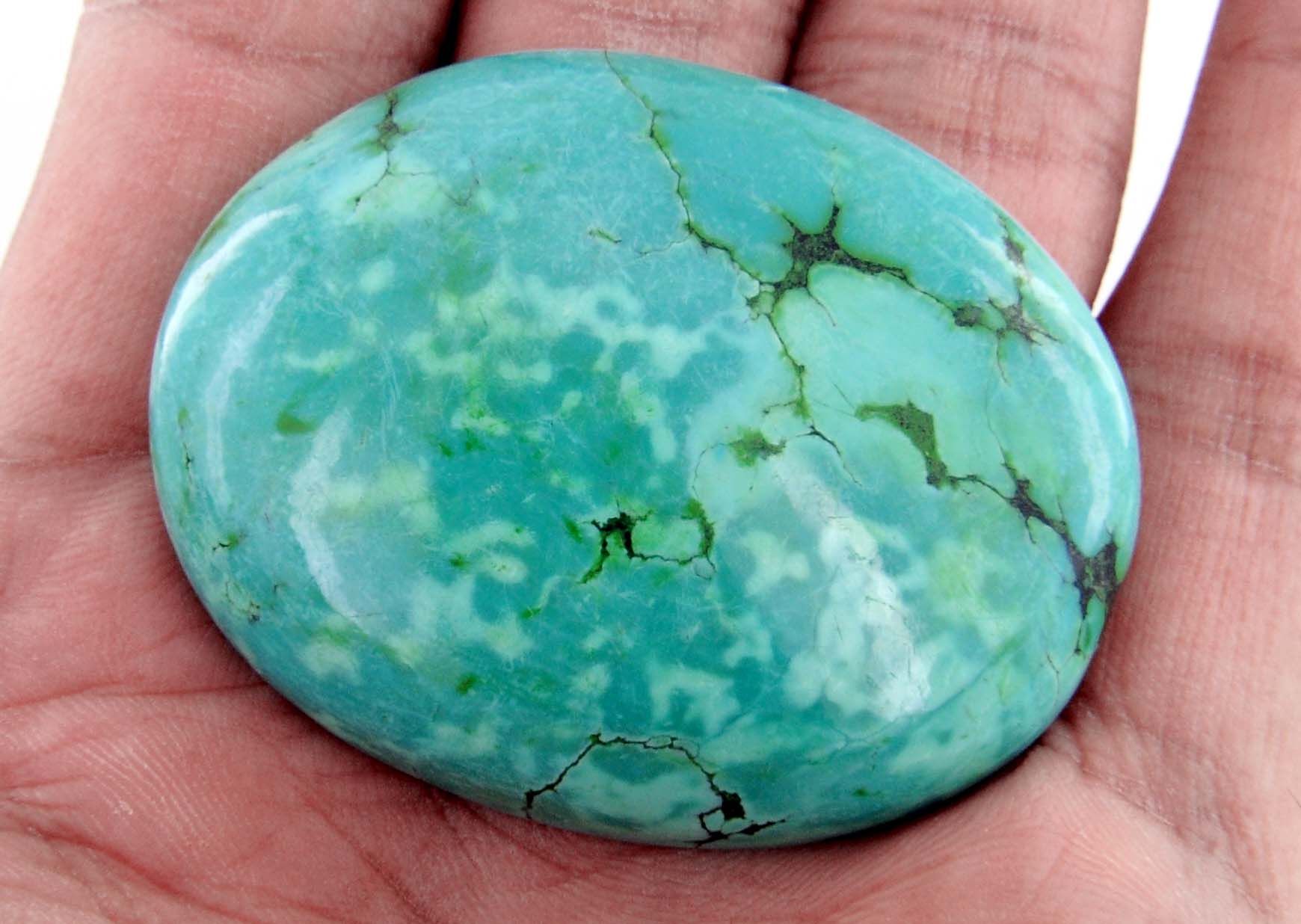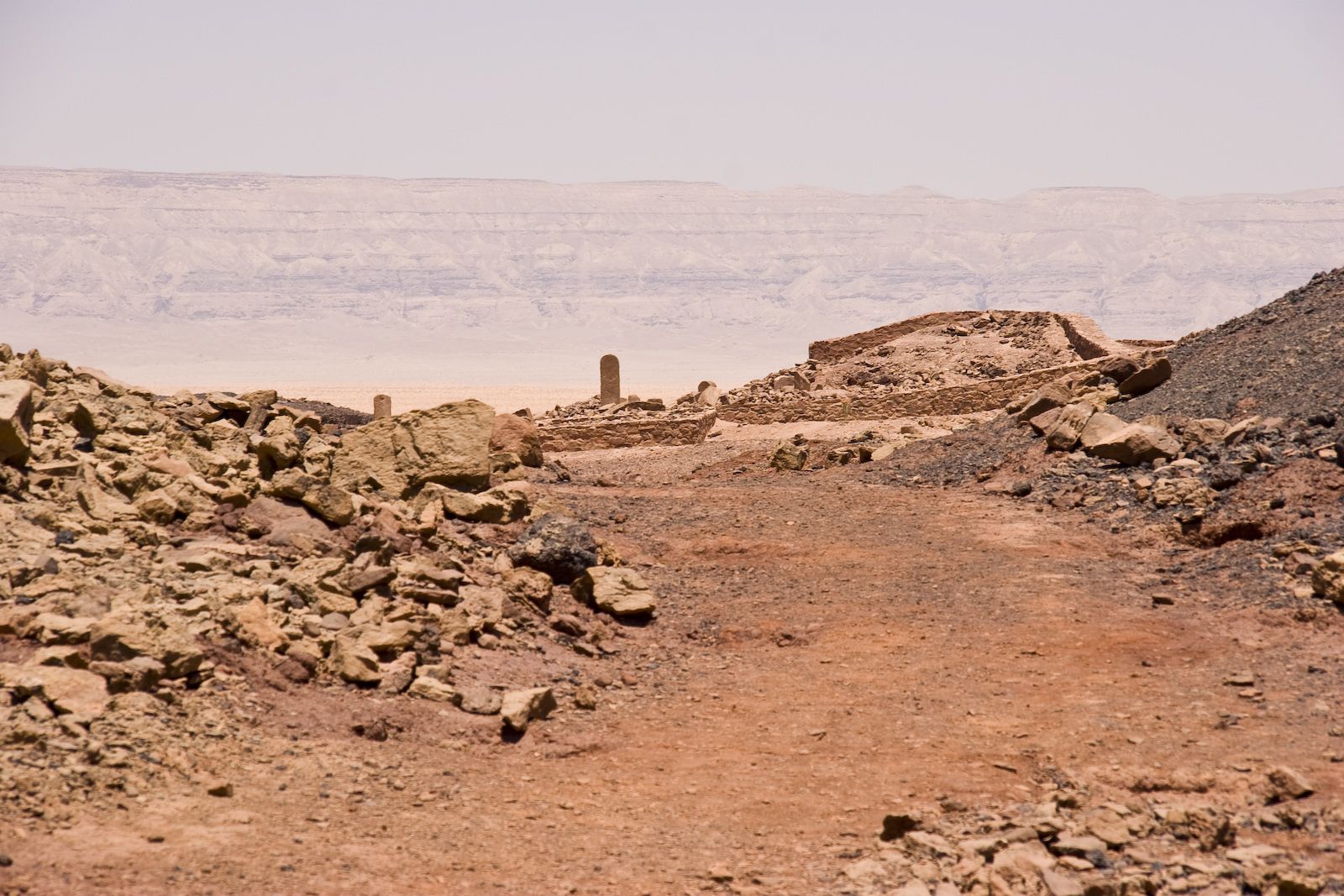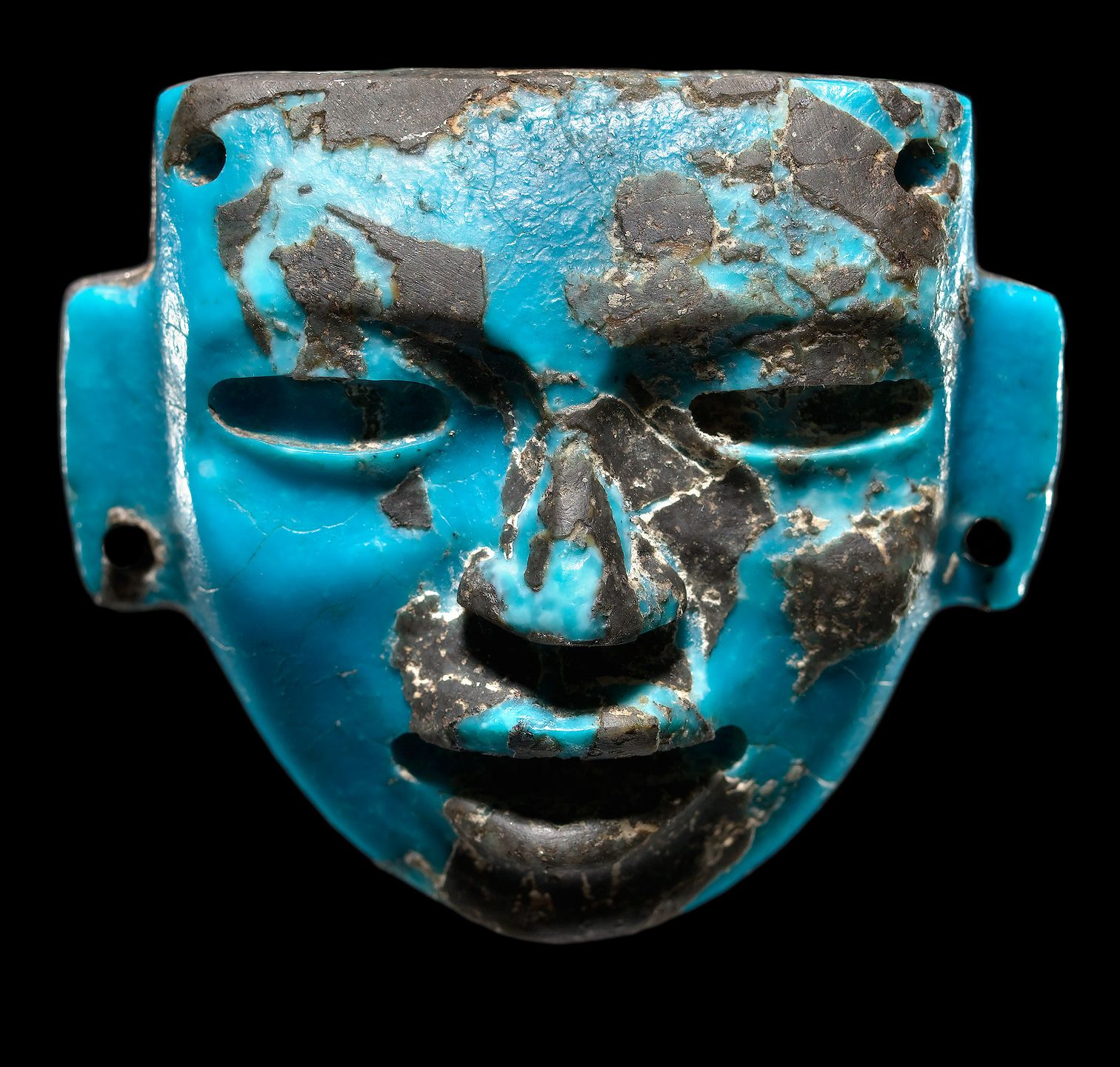Historically, precious stones have been the subject of interest from many points of view, their beauty, properties and symbology have placed them in a place of honor along with other elements of nature in the field of science and healing. Next, we will talk about turquoise.

the turquoise
In general terms, it can be said that turquoise is a precious stone of unknown origin, whose name, although it seems unusual, has nothing to do with the fact that this gem comes from Turkey. In fact, there are no turquoise deposits in this area of the planet, to make this statement. If you are interested in topics related to natural elements, we recommend the following article: 10 Medicinal plants and what they are used for
The turquoise nomenclature has another origin; It is believed that this name was given because Turkey was the region where it was traded since ancient times, through the Silk Road. The link with this country came from then, by associating the word turquoise with Turkish, which in French means "Turkish stone", or "turquoise crystal".
It is said that this gem traveled from Turkey to Western Europe, becoming popular and becoming a very precious stone, to the point that it was used to embellish the crown of Marie Louise, who received this jewel from Napoleon himself as a wedding gift.
Currently it is possible to find imitations of this gem in the field of costume jewelry, with an offer of stones built with other materials, or perhaps by special intervention treatments of an original, often difficult to distinguish from an authentic one, even by experts.
In any case, turquoise from the field of science, as established by the Strunz classification, is nothing more than a bluish-green mineral, corresponding to class 8 of phosphates, that is, an aluminum phosphate and copper (CuAl6(PO4)4(OH)8·4H2O), which when compacted, results in an appreciable gem of great quality and beauty, appreciable since ancient times.
Turquoise Properties
Turquoise is a mineral with variable properties, which we can find in nature as cryptocrystalline masses or small crystals. Despite the fact that all turquoises have the same composition, it is possible to find differences between various pieces of this gem, according to certain attributes that it has to do with, its fragility, weight, brightness and color.
Turquoise is a stone of fragile condition, its hardness is inferior even to the glass of an ordinary window; Regardless of how fine it may be, its possibility of being scratched by another mineral, that is, its resistance to this event, according to the Mohs scale, is less than 6.
Regarding the above, it is important to highlight the following: the more porous and soft a turquoise is, the lower its specific weight will be, which in general could range between 2,9 and 2,3 g/cm3. This mineral usually has a variable porosity, which affects its weight and hardness.
Brilliance is one of the attributes or property that usually attracts attention when talking about precious stones. Here it is important to clarify the following, it is not just the brightness that confers this description. It is the hardness of the mineral and the difficulty of finding it in nature, which brings it closer to this consideration. The desirable properties of a mineral as a gem have to do with its possibilities of working in the field of goldsmithing and of course its beauty.
Regarding the brightness of turquoise, it is a rather opaque or pale mineral, a property that does not detract from its beauty compared to other gems, and although its color is popularly associated with blue, this gem can be seen in other shades, ranging from white to a variety of blues, and from blue-green to yellowish-green.
The blue or green color that this mineral presents, in any case, will depend on the inclusion of other elements in its composition; iron impurities or dehydration processes, if it is the color green, presence of copper, if it is the color blue. This mineral is rarely found fragmented into fine crystals, nature usually offers it to us in a compacted way.
Deposits and exploitation
Of secondary formation, that is, configured from the decomposition of other minerals (the primary ones), turquoise is a strange stone which can be found on the planet, especially in desert places. Although it is said that this was one of the first precious stones to be extracted, its commercialization did not expand in such a way that today one could speak of a large-scale exploitation of this mineral.
The distance between the turquoise deposits and places for its treatment and commercialization, have surely determined the above; in addition to the fact that, over time, many historical places, dedicated to these tasks, were reduced. However, despite the circumstances, the approach to this precious stone is maintained today, thanks to the temporary operation of some places that survived this circumstance.
With rudimentary procedures, basically by hand, turquoise is a mineral whose extraction is carried out in the following countries: Spain, Iran, Syria, and the United States, a country where it is obtained as a by-product of the large-scale exploitation of another mineral: Copper. See below, the sites where the turquoise deposits are located in these countries.
Spain
There are several places in Spain where you can find this precious mineral, although not in large quantities. Thus, for example, we can locate turquoise, in the prehistoric deposits of the mineral called "variscitas" (aluminum phosphate), in a town called Palazuelos de las Cuevas, corresponding to the municipality of San Vicente de la Cabeza in the province of Zamora, and also in the prehistoric mines of Gavá Can Tintorer, in the province of Barcelona.
Other places where it can be found, associated with other minerals, are, for example, the tungsten mines of San Finx, in the municipality of Lousame in the province of La Coruña, and in the San José or Valdeflores mine, located in the Sierra of the Fly, Cáceres Municipality; in this site, linked to quartz and amblygonite, presenting a beautiful greenish blue color. To a lesser extent, it is possible to find small remains of this mineral, south of León, Castrocalbón municipality.
Iran
Iran, formerly Persia, is the country that has the largest and most important reserve of turquoise, for more or less 2000 years, viz. The country stands out not only for this attribute but also for considering the turquoises from this region as the most beautiful gems due to the perfection of their color.
The turquoise referred to can only be found at the top of Ali-mersai mountain, a 2012 meter high hill, located in the northeast of the country, 25 km from the capital of the province of Khorasan, the city of Mashad. If you are interested in topics related to ancestral cultures, we recommend the following article: Buddhist symbols
Sinai
It is said that the Sinai Peninsula is the place on the planet where the oldest turquoise deposits are found. With an approximate date from the year 3000 BC (first dynasty), apparently by that time, this precious mineral was already extracted, which is why the natives of the place gave this region the name, the country of turquoises.
This peninsula has 6 turquoise mines, all located on the south west coast of the region, covering a large area of land; however, from a historical point of view, two of them stand out for their antiquity, these would be those located in Serabit el Jadim and Wadi Maghara. As a curious fact, these sites are located a few meters from a temple dedicated to the worship of the goddess Hathor.
United States
The United States is the country in America that has the largest number of turquoise mines, some of these mines are disabled for this purpose, others, executing their extraction; the deposits referred to are located particularly in 5 regions located in the southwest of this nation (New Mexico, California, Nevada, Arizona and Colorado).
Within the framework of a brief historical review on this subject, we find, for example, that long before the discovery of America, the natives already extracted this mineral, using rudimentary stone tools, such is the case of the deposits of California and New Mexico. , the latter being the Cerrillos mine, the oldest deposit in the region.
In this regard, it is said that before 1920, this region was one of the most productive in terms of turquoise exploitation, unfortunately today this activity has substantially decreased. At most, one mine located in California, the Apache Canyon deposit, is currently operational and with marketing capacity.
Other deposits
Interestingly, and despite the fact that this mineral is of ancient date in the history of humanity, there are references to its ornamental use in ancient cultures such as the Egyptian (it was used by its rulers), Inca and Aztec in America and even China ( Chang dynasty), its exploitation as stated in previous paragraphs, did not expand in line with the admiration that this gem aroused.
Regarding the above, it is difficult to establish with certainty the reasons for this fact, since in addition to the aforementioned deposits, where the extraction of this mineral is carried out, there are other places, where turquoise mines are probably found, this, at Judging by the importance and use given as an ornamental or barter piece, in India, in the caravans of Asia and among nomadic human groups, such as the Mughals.
In fact, it is known that this gem is highly valued in the mountainous areas corresponding to the Himalayas and Altai, where it is used to adorn the hair of men and women. Likewise, in China in the Yunxian and Zhushan area, Hubei province, precious pieces of compacted turquoise have been found, in the form of nodules. For 3000 years, this country has deposits of turquoise.
In this regard, Marco Polo, speaking about his trips to this country, said he had found turquoise in the southwest of China, in a province with the capital Chengdu, called Sichuan. Here it is important to note that the bulk of turquoises extracted in this country are mostly exported, and to a lesser extent, a group of these are carved locally, with the same technology used to work jade.
A place that is said to stand out for the quality of its gems is Tibet, where apart from having a particular appreciation for green turquoise, they have an important deposit in the Derge mountains, located in the vicinity of the town of the same name, in the Tibetan autonomous prefecture of Ganzi, corresponding to the Chinese province of Sichuan and Nagari Khorsum.
About the existence of the aforementioned deposits, there are those who question it due to lack of verification, however, what is a reality is that countries such as Russia, Mongolia, Nepal, Bhutan, Afghanistan, Turkestan, India and the peninsula Indochina, are regular buyers of this gem, which is used to adorn their clothes in religious and traditional events.
Mexico is the Central American country that has reported the presence of turquoise, specifically in the Cananea and Nacozari copper mines in the state of Sonora, however, in this case its extraction is not carried out or commercially treated, since the company that owns the deposit does not have it among its work objectives. Other countries that exploit this mineral are Australia and northern Chile.
history of use
Since ancient times, there is knowledge of the use of this mineral, there are many examples, such as in Egypt with the mask of Tutankhamun, the pre-Columbian cultures in America (Aztecs, Incas, Moches, Chimu), and also the Persians, Mesopotamia and civilizations from China and India.
In Europe it is known, it was introduced through the Silk Road through Turkey, but it was not until the XNUMXth century when it became popular as an ornamental stone; in Japan it is known that it was in the eighteenth century, where it was installed in popular culture. It was also said that turquoise had healing power, and that it changed color depending on the health of the wearer, additionally protecting against evil energies.
In the Aztec culture, it is known that they combined turquoise with different materials (wood, stone, metals, gold, among others), to make objects to be used in different ceremonies. Currently, this mineral is basically used in the manufacture of jewelry and costume jewelry.
value and care
The value of turquoise depends on the purity of its color, with dark blue being the most sought after and valued; To the extent that its color fades, acquiring other shades (greenish), it is devalued, as well as if it becomes calcareous (soft), making its use in jewelry impossible.
The taste for the form of presentation of this stone varies according to the region, for example, in the United States, they prefer them with veins, while in Asia they prefer pure stones. In the work with turquoise, other attributes are valued, such as the brightness, color uniformity and symmetry of the stone, however, the quality of the work done with turquoise is what will attract the attention of the public.
The price of turquoise is calculated based on its size in millimeters; As for its treatment, there are various ways, but the most recommended is the one that is done using oil or wax to improve its color and shine; however, it will be more expensive, that which does not require any treatment, given its purity.
Turquoise is a fragile stone, sensitive to certain stimuli that can deteriorate its attributes, such as: sunlight, perfumes, cosmetics, oily skin, suntan lotions, hair sprays, among other solvents. After use, it should be cleaned with a clean cloth and stored in a cool place, apart from other parts, to avoid scratches.
turquoise engraving
The lack of consistency in the hardness of turquoise surely represented, over time, difficulty in making engravings on it; this condition plus the lack of appropriate tools. They must have represented great problems when it came to working the gem with due mastery and professionalism. This is why, in the universe of jewelry and costume jewelry, there are very few turquoise engravings that can be referenced as important.
However, there are some pieces of great quality, which represent examples of works in this stone, which deserve to be expressed, such as: an amulet from the Genovesio collection, representing the goddess Diana; the Cabinet of the Duke of Orleans, with two turquoise engraved with the faces of Diana and Faustina; and in the Florence gallery, a ball-shaped turquoise, with the engraving of a Roman emperor, apparently Caesar or Tiberius.
symbology
Taking into consideration the ancestral cultures, we can perceive that the use of turquoise as an ornamental piece of clothing represented, in the first place, an aesthetic value, given its particular beauty, which in its state of purity of blue color, was associated with the energy of water. Second, the gem represented a value linked to special properties for healing.
In this regard, the healing powers attributed to this gem are striking as an element that promotes general healing, and in some diseases associated with the respiratory tract. Worn as an amulet, turquoise is said to promote love, luck, and personal protection against evil energies.
From the astrological point of view, this stone is identified with the sign of Taurus, since it represents peace, tranquility and calm, characteristic of the sign of the bull. Having a piece of turquoise as a companion, you will notice that even in the most difficult situations you will always have the balance and patience necessary to get out of the commitment.
If you liked our article, we invite you to review more interesting topics within our blog, such as Protection Amulets







